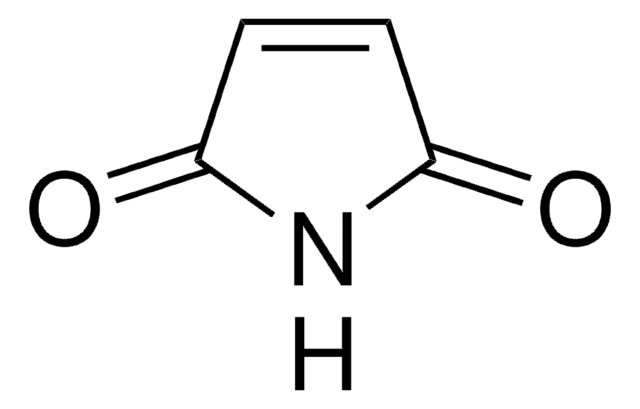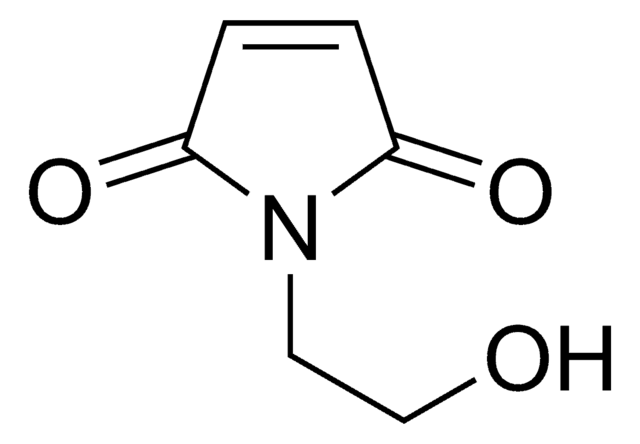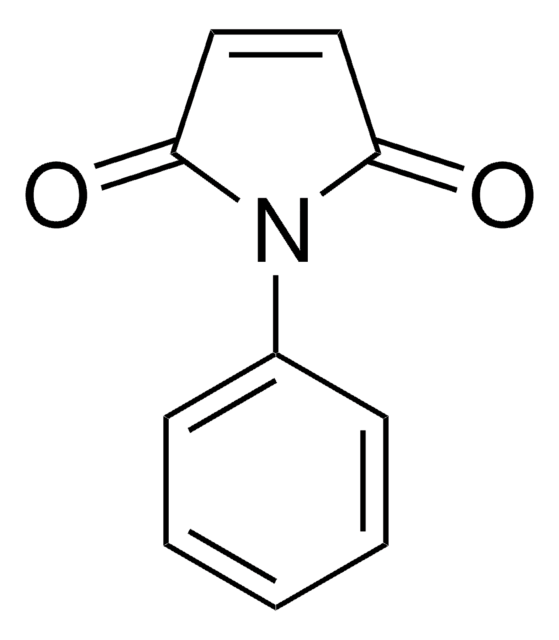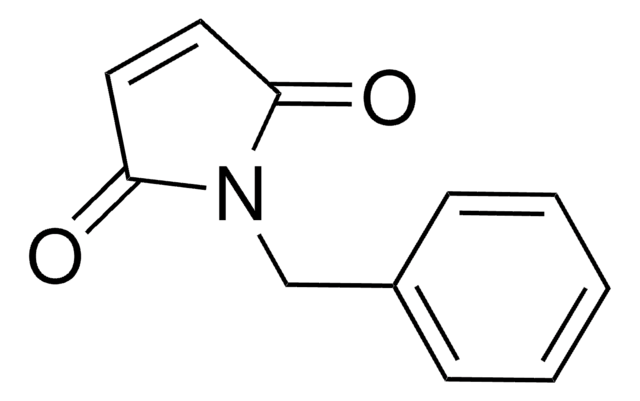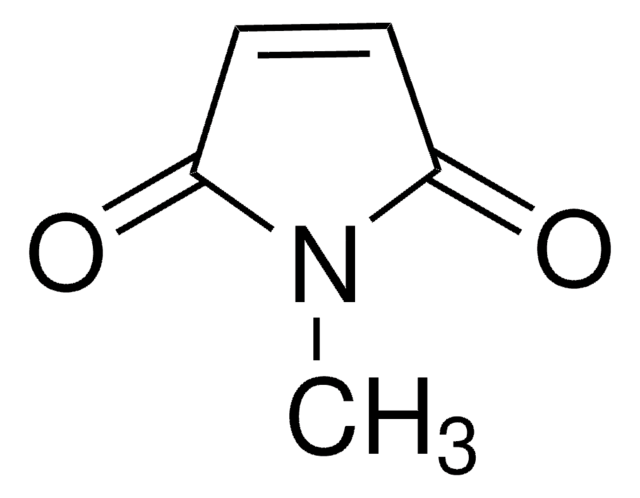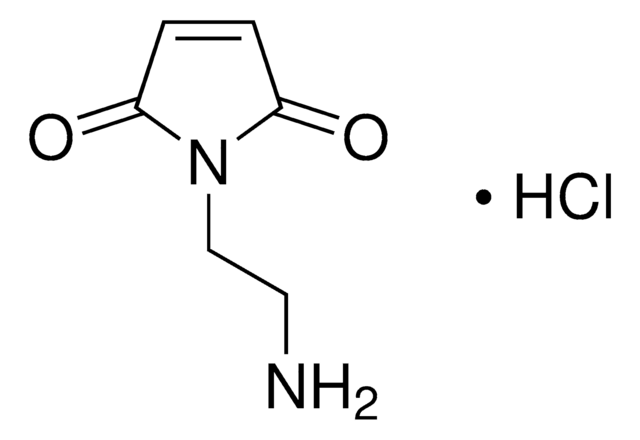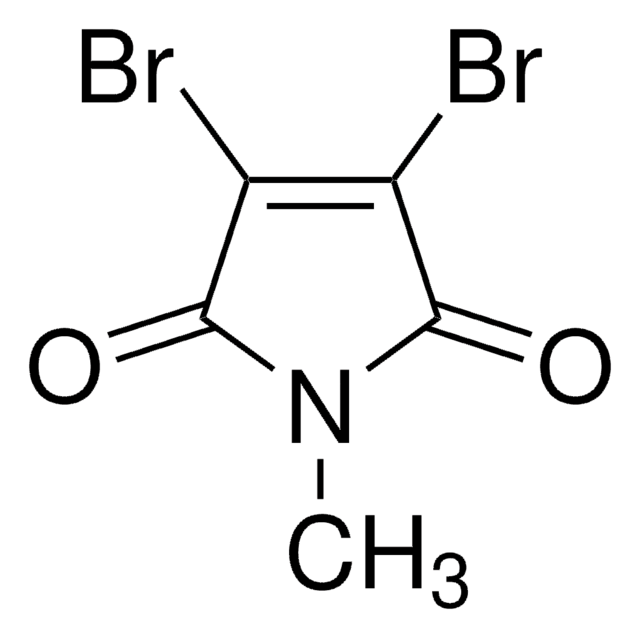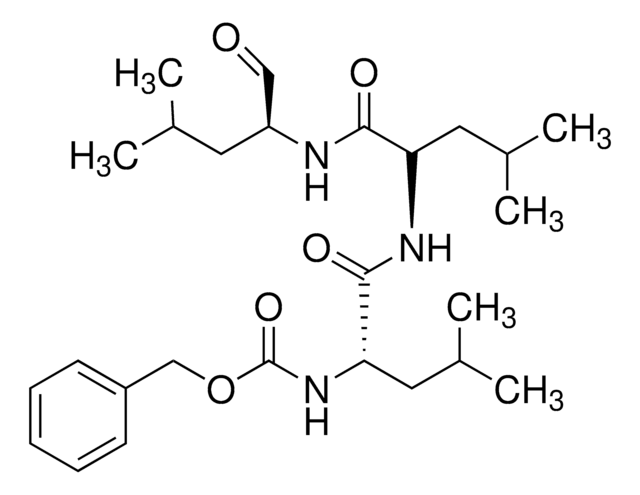381543
N-Cyclohexylmaleimid
97%
About This Item
Empfohlene Produkte
Qualitätsniveau
Assay
97%
mp (Schmelzpunkt)
89-91 °C (lit.)
Funktionelle Gruppe
imide
maleimide
SMILES String
O=C1C=CC(=O)N1C2CCCCC2
InChI
1S/C10H13NO2/c12-9-6-7-10(13)11(9)8-4-2-1-3-5-8/h6-8H,1-5H2
InChIKey
BQTPKSBXMONSJI-UHFFFAOYSA-N
Allgemeine Beschreibung
Anwendung
Signalwort
Danger
Gefahreneinstufungen
Acute Tox. 3 Oral - Aquatic Acute 1 - Aquatic Chronic 3 - Eye Irrit. 2 - Skin Irrit. 2 - Skin Sens. 1A - STOT SE 3
Zielorgane
Respiratory system
Lagerklassenschlüssel
6.1C - Combustible acute toxic Cat.3 / toxic compounds or compounds which causing chronic effects
WGK
WGK 3
Flammpunkt (°F)
Not applicable
Flammpunkt (°C)
Not applicable
Persönliche Schutzausrüstung
dust mask type N95 (US), Eyeshields, Gloves
Hier finden Sie alle aktuellen Versionen:
Besitzen Sie dieses Produkt bereits?
In der Dokumentenbibliothek finden Sie die Dokumentation zu den Produkten, die Sie kürzlich erworben haben.
Kunden haben sich ebenfalls angesehen
Unser Team von Wissenschaftlern verfügt über Erfahrung in allen Forschungsbereichen einschließlich Life Science, Materialwissenschaften, chemischer Synthese, Chromatographie, Analytik und vielen mehr..
Setzen Sie sich mit dem technischen Dienst in Verbindung.